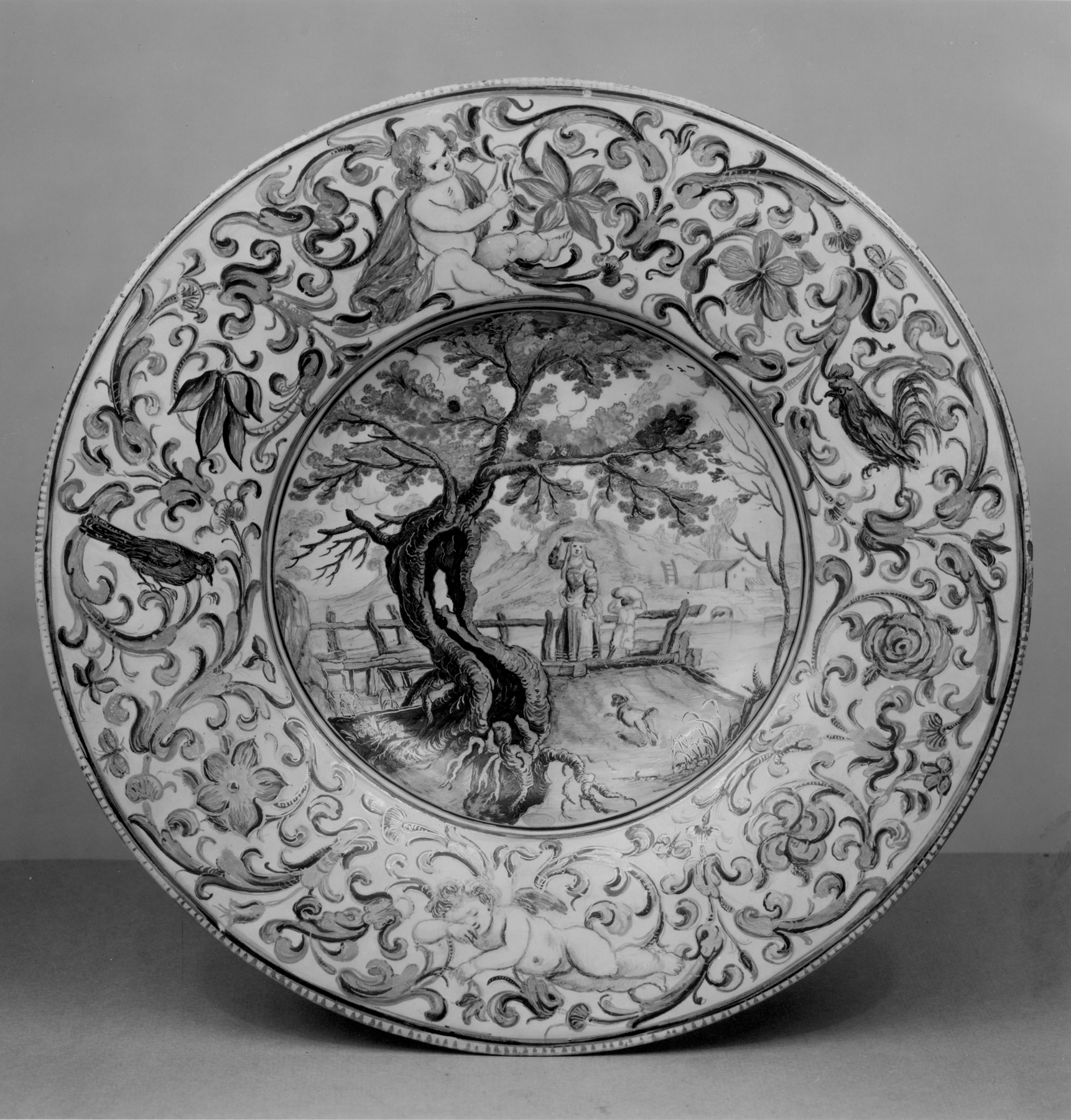Plate with an Idyllic Rural Landscape
(Baroque Europe )
This romanticized view of rural life with picturesque details such as the gnarled tree reflects the influence of French decorative art and engravings on Italian ceramics at this period. This is also true of the pastel colors (grey-blue, grey-green and copper-green, yellow, ochre, and manganese, heightened with gold) that result in a watercolor-like effect. The marli (broad, flat border rim) is decorated with two putti (naked toddlers that amusingly act above their age), a rooster, a bird, insects and flowers within serpentine leaf scrolls.
The imagery is characteristic of Carlo Antonio Grue’s work at the end of the seventeenth and beginning of the eighteenth century. For more on the Grue family see no. 48.1755; for more works by Carlo Antonio, click on his name in the “creator” field; for information on "maiolica," see 48.1336.
Provenance
Provenance (from the French provenir, 'to come from/forth') is the chronology of the ownership, custody, or location of a historical object. Learn more about provenance at the Walters.
Sangiorgi, Rome [date and mode of acquisition unknown]; Henry Walters, Baltimore, 1930, by purchase; Walters Art Museum, 1931, by bequest.
Geographies
Italy, Castelli (Place of Origin)
Measurements
H: 1 3/4 x Diam: 11 5/8 in. (4.5 x 29.5 cm)
Credit Line
Acquired by Henry Walters, 1930
Location in Museum
Not on view
Accession Number
In libraries, galleries, museums, and archives, an accession number is a unique identifier assigned to each object in the collection.
In libraries, galleries, museums, and archives, an accession number is a unique identifier assigned to each object in the collection.
48.1753


